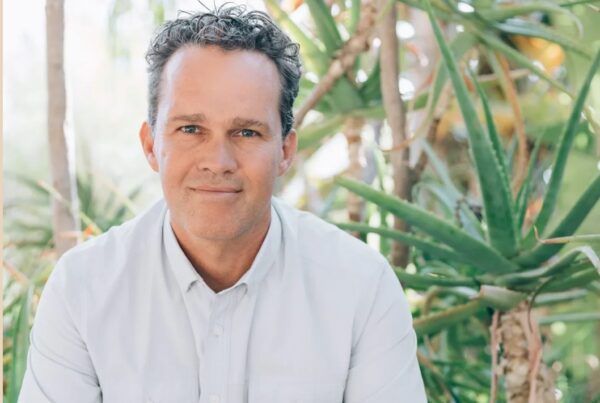Last year, Vice-President of the United States Kamala Harris introduced a bill to the United States Senate that aimed to fund both research and education on uterine fibroids. With an estimated 26 million Americans experiencing fibroids, and about 20 percent to 80 percent of women set to develop fibroids by the time they reach age 50 worldwide, it’s important that we follow VP Harris’ path and raise awareness about this debilitating condition.
Fibroids are noncancerous tumors (less than one in 1000 can turn cancerous) that grow in the uterus. They are made of muscle and other tissues. Their size can range from pea-sized to as big as a tennis ball, and sometimes even larger. Some women may even have multiple fibroids.
Some women with fibroids don’t experience any symptoms. However, others may experience debilitating symptoms, as well as fertility problems and pregnancy complications. What’s more, various research has found that fibroids disproportionately affect women of color.
Do black women suffer more from fibroids?
According to Johns Hopkins Medicine, nine out of 10 women will develop fibroids before they’re 50 years old, and in relation to white women, the statistics are even more frightening.
According to research, black women:

Photo by Sora Shimazaki from Pexels
- are four times more likely to have fibroids between the ages of 18 and 30, compared to white women
- develop fibroids at an earlier age
- are 2.4 times more likely to undergo a hysterectomy – removal of their uterus.
- have higher rates of hospitalization from complications
Why?
There are a few risk factors that can increase one’s risk of developing fibroids.
1. Obesity
According to a Chinese study published in the Asia Pacific Clinical Nutrition Society, being overweight or obese can increase one’s risk for uterine fibroids.

Photo by lucas da miranda from Pexels
Statistics have revealed that;
- 4 out of 5 African American women are overweight or obese
- 68% of South African women are obese
- Rates of obesity among black African and black Caribbean women in the UK are consistently higher than among white women
2.Vitamin D deficiency
Data published in the International Journal of Women’s Health suggested that low vitamin D levels can increase the likelihood of developing fibroids.
That said, research has found that vitamin D deficiencies are more prevalent in the black community (1). This may be because high levels of melanin hinder the production of vitamin D in the skin.
3. Hair relaxers
Hair relaxers are products used to help straighten black women’s hair. The politics of black hair aside, research has found that these products may deteriorate a black women’s health.

Photo by Suad Kamardeen on Unsplash
A 2012 study published in the American Journal of Epidemiology examined over 23 000 African-American women over a period of 12 years. The researchers found that women who use hair relaxers are 1.17 times more likely to develop fibroids, and women who use hair relaxers 7 or more times a year are 1.23 times more likely to develop fibroids.
While this study was published in 2012, more recent research has highlighted the dangers of chemical relaxers. According to a study from the National Institutes of Health, black women who use hair relaxers at least every five to eight weeks are 30% more likely to develop breast cancer.
4. Inequities in access to healthcare
Serena Williams revealed to VOGUE magazine that while giving birth to her child, she began to experience pulmonary embolism (blood clots that block arteries in the lungs) symptoms.
Having had a history of pulmonary embolism, Williams described her symptoms to a nurse. She asked for a CT scan and blood thinner. Unfortunately, the nurse dismissed her pleas and a doctor ordered an ultrasound for her legs instead. Following the ultrasound sound that discovered nothing, Williams received a CT scan that confirmed her suspicions.
Unfortunately, the embolism had caused Williams to cough so severely that her cesarean section wound opened. Moreover, during surgery to close the wound, doctors found a pool of blood outside the blood vessel in her abdomen. Williams then had to then undergo even more surgery to prevent additional clots from spreading. As a result, she was on bed rest for the first six weeks of motherhood.

tommaso79/shutterstock
While some may say that William’s story is a once-off unfortunate incident, a study published in the Proceedings of the National Academy of Sciences of the United States of America found that medical practitioners hold a bias towards black people and their tolerance for pain, which often causes them to ignore or disregard Black women’s physical pain.
Furthermore, a study published in Epidemiology found that perceived racism was associated with an increased risk of fibroids in US-born black women.
What are the symptoms of fibroids?
Women with fibroids may experience the following:
- Heavy or prolonged menstrual periods
- Pelvic pressure or pain (black women reportedly experience more severe pelvic pain)
- Passage of blood clots during their period
- Painful sex
In addition to the physical effects, women with fibroids have revealed that the symptoms can cause significant distress, affecting their quality of life and increasing the risk for anxiety and body image issues (2).

Photo by Nick Owuor (astro.nic.visuals) on Unsplash
It also doesn’t help that many women delay receiving treatment as they believe their symptoms are normal. By the time they do see a doctor, they are anemic, as well as fatigued, and very sick. This is why it is important to monitor your body for symptoms and reach out to your health practitioner. Remember: Bleeding heavily for 10 days is not normal.
How serious are fibroids?
While the risk for cancer is low, if left unmanaged, fibroids can lead to anemia, decreased fertility, increased pain, and they can even block your fallopian tubes (3).
What are my treatment options?
1. Contraceptives
For heavy bleeding and a more normal cycle, your doctor may prescribe contraceptives.
2. Lupron
This is a medication that falls under GnRH agonists. The class of medications stimulates hormones in an effort to shrink fibroids and stop heavy bleeding.
3. Uterine Artery Embolization (UAE)

Photo by Jessica Felicio on Unsplash
This is a procedure whereby small particles are injected into fibroids. This is meant to shrink them and ease painful symptoms.
4. Intrauterine devices (IUDs)
IUDs are meant to reduce heavy bleeding, but they do very little to address the presence of fibroids.
5. Surgery
a. Myomectomy
This is a procedure whereby a surgeon removes the fibroids from your uterus, without taking out the healthy tissue.
Women with fibroids who still want to bear children often undergo this procedure. That said, it should be noted that fibroids can still grow back after a myomectomy.
b. Hysterectomy
A hysterectomy remains the most effective way to remove fibroids and eliminate any chance of them growing back.
How so?
Because a hysterectomy refers to the irreversible removal of the uterus. This is a very big decision. It’s important that you take your time and weigh your options before deciding to undergo a hysterectomy. Remember, once your uterus is gone, you can’t put it back.
How can I reduce my risk for fibroids?
1. Eat a Mediterranean diet
A Mediterranean diet can help you both manage and reduce your risk of developing fibroids.

Photo by Jack Sparrow from Pexels
Increase your intake of fresh vegetables, fruits, legumes, nuts, and seeds as well as fish.
2. Cut back on alcohol
A study published in the Current Obstetrics and Gynecology Reports found that women who drink one or more beers a day increase their risk for fibroids by more than 50%.
3. Reduce red meat consumption
Some studies have suggested that red meat can increase levels of estrogen, which can increase your risk for fibroids. So, it may be best to monitor your red meat consumption.
4. Drink some green tea
As we know, green tea is incredibly rich in a number of antioxidants that can help to protect our health. It appears that one of these antioxidants may even help to protect against fibroids.
A 2013 study found that participants who had drunk green tea experienced less severe symptoms, and their fibroids shrunk in size.
5. Cut back on sugar and processed foods
Sugary and processed foods can increase the risk of fibroids, and they can even worsen symptoms.
6. Stay active

Photo by Oluremi Adebayo from Pexels
Exercising has a number of benefits, and that includes reducing your risk for fibroids,
If you already have fibroids, and you want to stay active, try low-impact exercises such as walking, jogging, or swimming.
7. Balance your estrogen levels
Elevated levels of estrogen can increase your risk for fibroids, or worsen symptoms.
One way to manage estrogen levels would be by avoiding endocrine disruptors. These are chemicals found all around us that can make their way into the body and disrupt hormone levels.
Additionally, some foods contain phytoestrogens. These are compounds that can mimic the estrogen found in the body, potentially causing a host of problems. Phytoestrogens can be found in soy products and red meat injected with hormones.

Photo by Xzibeat Da Grinder from Pexels
8. Get enough vitamin D
In addition to getting more sun (after using the appropriate sun protection products), you can also increase your vitamin D intake with supplements or by eating more egg yolks, fatty fish as well as fortified dairy products and cereals.
9. Look out for symptoms
It’s important to familiarise yourself with fibroid symptoms so that you can address the issue before it becomes problematic. While you may have been told otherwise, incredibly painful periods and heavy bleeding are not normal. You should reach out to your medical professional if you begin to experience any of the above-mentioned symptoms.
10. Address healthcare disparities
Everybody, regardless of their race, gender, and sexual orientation, deserves access to dignified care.
Don’t shy away from holding your doctor accountable by asking them questions. If you feel that you are not being heard, you have the right to seek a second opinion.
Bottom line

Photo by DISRUPTIVO on Unsplash
Yes, black women tend to develop fibroids more often than women of other races. However, they can still manage to protect their health by managing them in the appropriate manner. Having fibroids isn’t the end of the world. Many black women still go on to live happy and healthy lives despite this condition. As long as they reach out to their healthcare professional and receive the appropriate care.





![women [longevity live]](https://longevitylive.com/wp-content/uploads/2020/01/photo-of-women-walking-down-the-street-1116984-100x100.jpg)











This was very informative. Will share. 🙂
Thank you for your positive feedback. We always appreciate it when we get a good comment. Pie will be delighted too.